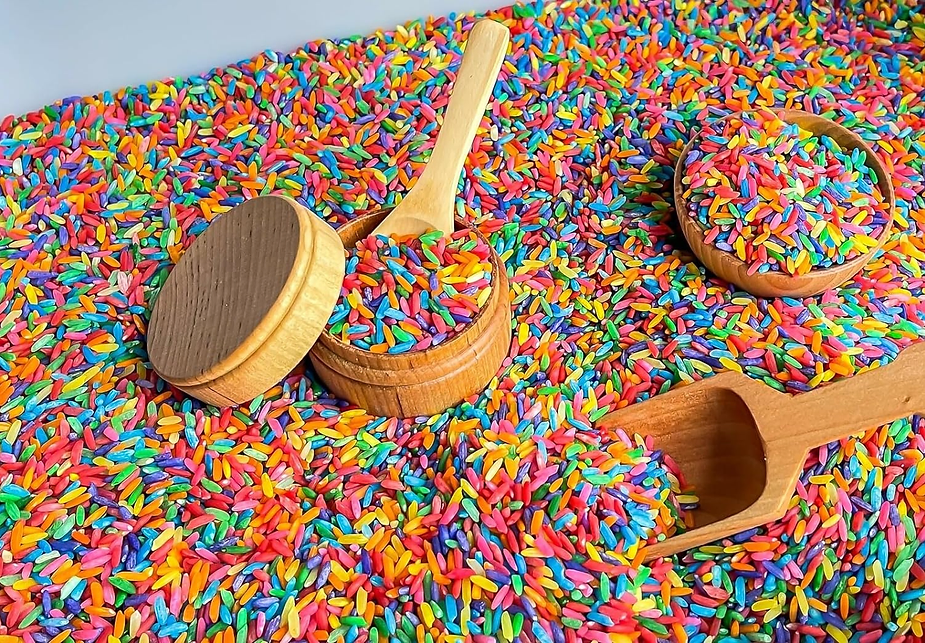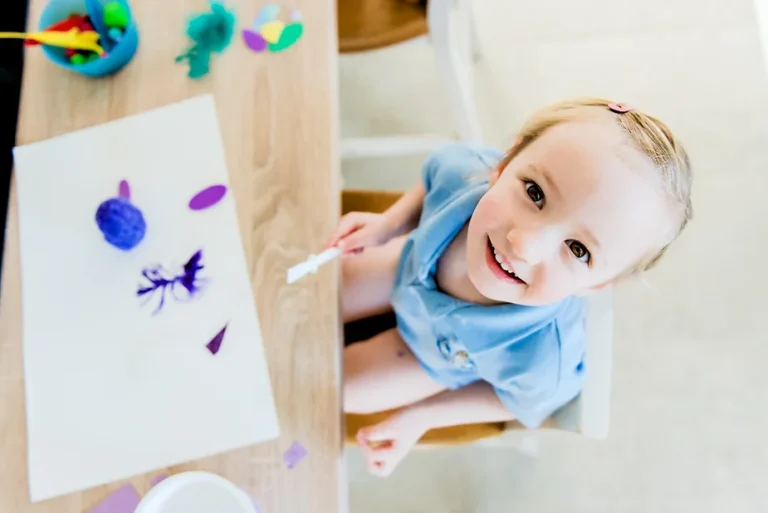15 Fun and Easy Sensory Activities for an Autistic Child

This post may contain affiliate links and I could earn a small commission at no cost to you. However, I will never recommend anything that I do not believe in or use myself. You can read more about my disclosure policy here.
Are you on the lookout for some awesome sensory activities to keep your little ones entertained and engaged? Well, you’ve come to the right place!
Let me share with you some fun and creative activities that not only entertain but also support the development of an autistic child through sensory play and exploration.
As a parent of an autistic child, I’ve learned to cherish moments of pure joy. One thing that never fails to captivate my son’s attention and bring a smile to his face is sensory play.
Whether it’s squishing colorful playdough between his fingers or splashing around in a bin filled with rice, his enthusiasm is contagious.
Sensory play is a gateway to discovery, learning, and pure fun. So, join me as I take you on a journey through some fantastic sensory play activities for an autistic child that have become a staple in our household.
What is Sensory Play?
Sensory play refers to activities that engage a child’s senses: touch, smell, taste, sight, hearing, and proprioception (awareness of body position) and vestibular (sense of balance).
These activities are designed to stimulate sensory receptors and create neural pathways in the brain, which helps children to process and respond to sensory information.
Why Sensory Play is Important for an Autistic Child
Sensory play serves as a vital tool in the toolkit of parents and caregivers of an autistic child, primarily due to the unique sensory processing differences many of these children experience.
Imagine trying to make sense of a world where everyday sights, sounds, and textures can feel overwhelming or disorienting. For an autistic child, this is often their reality.
Sensory play activities for an autistic child offers a safe and structured environment for them to explore and make sense of sensory input, leading to several key benefits:
Related: Why Sensory Play Is Important For Child Development
Improving Sensory Processing
Autistic children often struggle with processing sensory information efficiently, which can lead to sensory overload and meltdowns.
Engaging in sensory play provides them with opportunities to gradually expose themselves to different sensory stimuli in a controlled setting.
Over time, this exposure helps them become more adept at processing and integrating sensory inputs, leading to reduced sensory sensitivities and improved ability to navigate their environment.
Enhancing Motor Skills
Many sensory play activities for an autistic child involve hands-on manipulation of objects, which naturally helps in developing both fine and gross motor skills.
From squishing playdough between their fingers to pouring water from one container to another, these activities not only provide sensory input but also promote coordination, strength, and dexterity.
Promoting Social Interaction
For some autistic children, social interactions can be challenging. However, group sensory play activities offer a non-threatening environment for them to engage with peers.
Whether it’s sharing a sensory bin filled with kinetic sand or taking turns on a swing set, these activities foster social bonds, communication skills, and cooperation among children.
Supporting Emotional Regulation
One of the most significant benefits of sensory play activities for an autistic child is its ability to promote emotional regulation and reduce anxiety and frustration.
The calming nature of certain sensory activities, such as swinging gently or playing with a sensory bottle filled with glittering water, can help autistic children soothe themselves when feeling overwhelmed or distressed.
Related: The Best Home Activities for Occupational Therapy
How Sensory Needs are Different for Autistic Children
Autistic children exhibit a wide range of sensory needs and sensitivities, which can vary greatly from one child to another.
Understanding these differences is crucial for tailoring sensory play activities to meet the specific needs of each child. Here are two common profiles:
Sensory Seekers
These children actively seek out sensory stimulation and may enjoy activities that provide intense sensory input.
From bouncing on a trampoline to squishing stress balls, sensory seekers thrive on activities that engage their senses and provide deep pressure input.
For them, sensory play serves as a source of excitement, helping them regulate their sensory experiences and stay focused.
Sensory Avoiders
On the other end of the spectrum are sensory avoiders, who may find certain sensory stimuli overwhelming or distressing.
These children often prefer quieter, more controlled environments and may exhibit aversions to certain textures, sounds, or lights.
For sensory avoiders, gentle and predictable sensory play activities, such as playing with soft fabrics or listening to soothing music, can provide a sense of comfort and security while gradually exposing them to sensory stimuli in a manageable way.
15 Fun and Easy Sensory Activities for an Autistic Child
1. Colorful Rice Bin
Create a vibrant sensory experience by using store-bought or dyeing batches of rice with colorful hues.
Encourage your child to explore the rainbow rice in a sensory bin by scooping and pouring, and burying treasures within.
This hands-on activity not only stimulates their tactile senses but also fuels imaginative play, sparking adventures in a world of colorful possibilities.
2. Nature Scavenger Hunt
Embark on a sensory journey outdoors with a nature scavenger hunt.
Let your children touch rough tree bark, inhale the fragrance of blooming flowers, and listen to the melodic chirping of birds.
As they work together to uncover hidden treasures, they strengthen bonds while engaging in sensory exploration and nurturing an appreciation for the natural world.
3. DIY Musical Shakers
Get creative with recycled materials to craft DIY musical shakers. Simply fill an empty plastic container, like a water bottle or easter egg, with rice or beans.
Encourage your little musicians to shake to the beat and revel in a symphony of sounds together.
This auditory adventure not only fosters rhythmic movement, but also stimulates auditory senses, providing a delightful sensory experience for all.
4. Swinging and Spinning
Take sensory play to new heights with swings, sit-and-spin toys, or a cozy hammock.
As your child swings gently or spins around, they’re not only enjoying the thrill of movement but also benefiting from vestibular input that helps with balance, spatial orientation, and can be incredibly calming for some children.
5. Kinetic Sand Exploration
Unleash your children’s creativity with kinetic sand, a mesmerizing tactile experience that invites them to build castles, sculptures, and patterns.
As they mold and shape the sand, they engage in teamwork and imaginative play while stimulating their senses with its unique texture.
6. Sensory Obstacle Course
Design an obstacle course targeting different senses, from crawling through fabric tunnels to hoping on river stones to jumping on crunchy bubble wrap.
Let your children navigate the course together, strengthening bonds through laughter and shared challenges.
This multisensory adventure hones sensory skills and coordination, transforming playtime into an exciting expedition.
7. Ice Play Station
Beat the heat with an ice play station featuring frozen toys trapped inside colorful ice blocks.
Watch as your kids collaborate to liberate the toys, giggling as they experience the cold and melting textures.
This refreshing sensory escapade promotes cooperation, problem-solving, and sensory exploration, making it a cool adventure on hot days.
8. Sensory Bins
Dive into a world of textures with sensory bins filled with rice, beans, pasta, sand, or water beads.
Watch as your child’s fingers explore the different sensations while scooping and pouring with small toys and containers.
Not only does this activity enhance tactile exploration, but it also hones fine motor skills and sparks imaginative play, transporting your little one to endless adventures in their sensory wonderland.
Related: Related: Sensory Bin Supplies: What You Need To Have
9. Play Dough and Clay
Mold, squish, and shape store-bought or homemade play dough and clay into endless creations using rolling pins and cookie cutters.
This activity isn’t just about making fun shapes; it’s about fostering creativity and fine motor development while providing tactile stimulation that engages the senses and fuels your child’s imagination.
10. Sensory Bottles
Create mesmerizing sensory bottles using clear plastic bottles filled with glitter, water, food coloring, and small objects like beads or sequins.
As your child gazes at the swirling colors and listens to the gentle sounds, they’re not only mesmerized but also benefiting from visual and auditory stimulation that helps with focus and promotes a sense of calm.
11. Water Play
Transform your backyard or bathtub into a sensory oasis with a water table or basin, cups, spoons, sponges, and floating toys.
As your child splashes and pours, they’re not only enjoying a soothing sensory experience but also improving their motor skills and learning fundamental concepts like volume and buoyancy through hands-on exploration.
12. Messy Play
Embrace the mess with shaving cream, finger paints, mud, or slime as your child engages in tactile exploration that encourages creativity and sensory discovery.
Whether they’re squishing, smearing, or swirling, messy play provides a hands-on experience that’s both engaging and enjoyable while enhancing sensory awareness and fine motor skills.
Related: How To Make An Awesome Dirty Truck Kids Backyard Play Area
13. Textured Crafts
Get crafty with arts and crafts textured materials like pipe cleaners, wooden beads, pom-poms, feathers and felt, as your child explores different textures while enhancing tactile discrimination, creativity, and fine motor skills.
Whether they’re gluing, cutting, or collaging, textured crafts provide a multi-sensory experience that’s both enriching and rewarding.
14. Light Play
Illuminate your child’s world with flashlights, fiber optic toys, glow sticks, or a light table that encourages exploration of light and shadow.
As they experiment with different light sources and observe the mesmerizing effects, they’re not only stimulating their visual senses but also engaging in an activity that promotes curiosity, exploration, and a sense of calm.
15. Sensory Storytelling Session
Immerse your children in a sensory storytelling session, adding textures and scents to their favorite tales.
Let them feel the story come to life as they touch fuzzy fabrics or smell scented candles that match the narrative.
This multisensory approach enhances engagement and understanding, transforming storytime into a captivating sensory journey.
Related: 10 Of The Best Children’s Books About Autism
Final Thoughts
Sensory play is a powerful tool to support the development and well-being of an autistic child.
By tailoring sensory activities to your autistic child unique sensory preferences and needs, we can help them navigate and enjoy the world around them more effectively.
Whether through tactile, auditory, visual, or vestibular activities, the goal is to provide enriching and enjoyable experiences that promote growth, learning, and happiness.
Recommended
- Why Sensory Play Is Important For Child Development
- Sensory Bin Supplies: What You Need To Have
- The Best Home Activities for Occupational Therapy
- The Best Board Games for Occupational Therapy
- Ultimate Toy Guide: 30 Best Sensory Toys for Autistic Children






